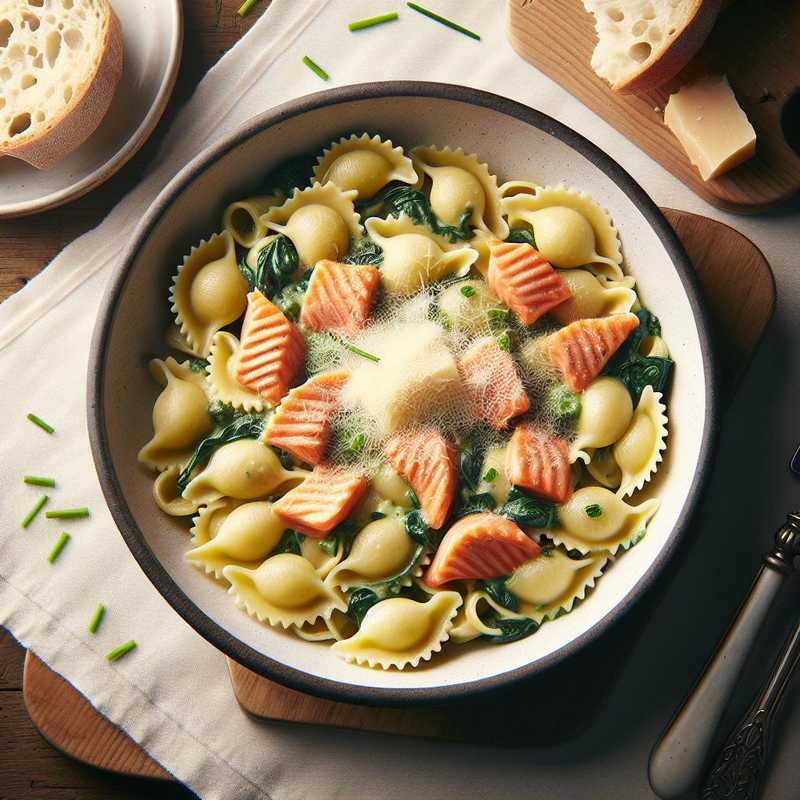Half-Moon Pasta with Salmon and Chives
17/11/2023The half-moon pasta with salmon and chives is a delicious first course. Here is the recipe:
Ingredients
- For the pasta:
- 300 g of durum wheat flour
- 3 large eggs
- For the filling:
- 200 g of smoked salmon
- 150 g of ricotta
- 1 bunch of fresh chives, finely chopped
- Salt and pepper to taste
- For the dressing:
- 100 g of butter
- Fresh chives chopped for garnish
- Grated zest of 1 lemon (optional)
Preparation
-
Begin by preparing the fresh pasta: pour the flour in a mound on a pastry board or a large bowl. Break the eggs in the center and start incorporating them into the flour, first using a fork and then kneading with your hands until you have a smooth and elastic dough. Cover with cling film and let it rest for 30 minutes.
-
Meanwhile, prepare the filling: finely chop the smoked salmon and mix it with the ricotta in a bowl. Add chopped chives, salt, and pepper to taste, and mix until you get a homogeneous mixture.
-
Roll out the fresh pasta dough using a pasta machine or a rolling pin, obtaining a thin sheet (about 1-2 mm). With a pastry cutter or a glass, cut out circles of dough.
-
Place a teaspoon of the filling at the center of each dough circle. Then fold in half to form half-moons and seal the edges by pressing them with your fingers or with a fork to close them well.
-
Cook the half-moons in plenty of boiling salted water for 2-3 minutes or until they rise to the surface.
-
As the half-moons are cooking, melt the butter in a pan until it becomes slightly golden. Add grated lemon zest if you wish.
-
Drain the half-moons from their cooking water and transfer them into the pan with the melted butter. Sauté for a minute to flavor them.
-
Serve immediately garnishing with more fresh chopped chives.
Curiosity
The half-moons, similar to ravioli but semicircular in shape, are very versatile and can be filled with a variety of ingredients, often including vegetables or cheeses. The use of smoked salmon and chives in this dish is a classic pairing that has its roots in Nordic cuisine, but it has been enthusiastically embraced in Italian cooking as well.
